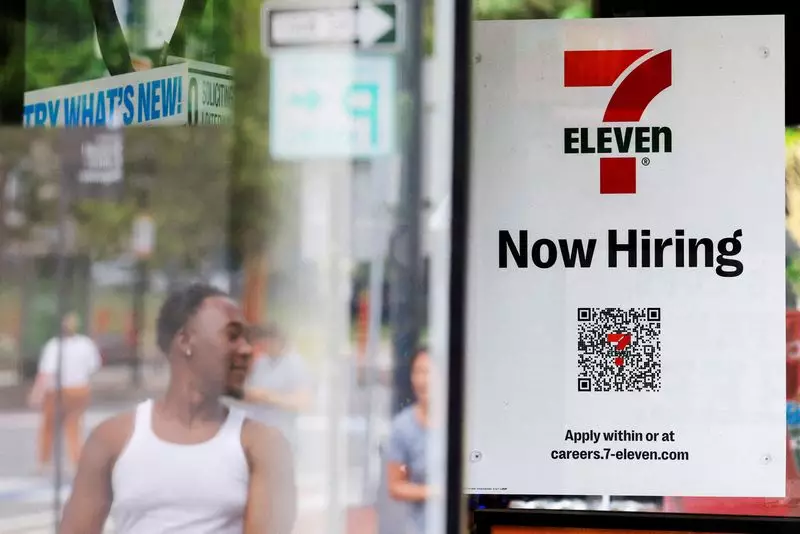The U.S. job market is expected to have experienced slower growth in June, with the unemployment rate holding steady at 4%. While the economy continues to expand, the pace of job creation is likely to have cooled off. This slowdown in job growth may indicate that the Federal Reserve will be able to control inflation without pushing the economy into a recession. The moderation in prices in May, along with an anticipated rise in annual wage growth at its slowest rate in three years, suggests that the trend towards disinflation is back on track after a surge in inflation earlier in the year.
The Federal Reserve may find comfort in the inflation outlook, as reflected in the expected job market data for June. This could potentially pave the way for the central bank to consider cutting interest rates later in the year. Fed Chair Jerome Powell has acknowledged the economy’s shift towards a “disinflationary path,” signaling a possible easing of monetary policy in the near future. Market analysts are optimistic that the Fed may start its rate-cutting cycle as early as September, following a period of aggressive tightening in previous years.
Job Growth Trends
Nonfarm payrolls are projected to have increased by 190,000 jobs in June, a significant drop from the previous month’s surge of 272,000 jobs. Economists emphasize the importance of maintaining a pace of at least 150,000 new jobs per month to keep up with population growth and immigration trends. While job creation has been robust in certain sectors, such as healthcare, leisure, and hospitality, concerns remain about the overall pace of employment growth.
Challenges in Labor Market Data
The Quarterly Census of Employment and Wages (QCEW) has indicated a slower rate of job growth compared to other data sources. Economists argue that QCEW figures may not capture the full extent of job creation, particularly among undocumented immigrants. The upcoming payrolls benchmark estimate by the Bureau of Labor Statistics is expected to shed more light on the discrepancies in employment data.
The Fed’s series of interest rate hikes aimed at curbing inflation have had mixed effects on the labor market. Sectors such as state and local government education have struggled to maintain staffing levels, while excess savings from the pandemic have been depleted, leading to a slowdown in demand for labor and services. The balance between controlling inflation and promoting economic growth remains a key challenge for the Fed.
While job growth may have slowed, wage growth has remained relatively strong, supporting consumer spending and economic expansion. Average hourly earnings are forecasted to have risen by 0.3% in June, contributing to an overall annual increase of 3.9%. This level of wage growth falls within the range considered consistent with the Fed’s inflation target of 2%. Policymakers are closely monitoring inflationary pressures and productivity levels to ensure that the economy remains on a stable growth path.
The U.S. labor market is facing a period of transition, with job growth slowing but wage growth remaining resilient. The Federal Reserve’s decisions regarding interest rates and inflation will play a critical role in shaping the future trajectory of the economy. As the country navigates through these challenges, policymakers and economists will need to closely monitor data trends and make informed decisions to support sustainable economic growth.

